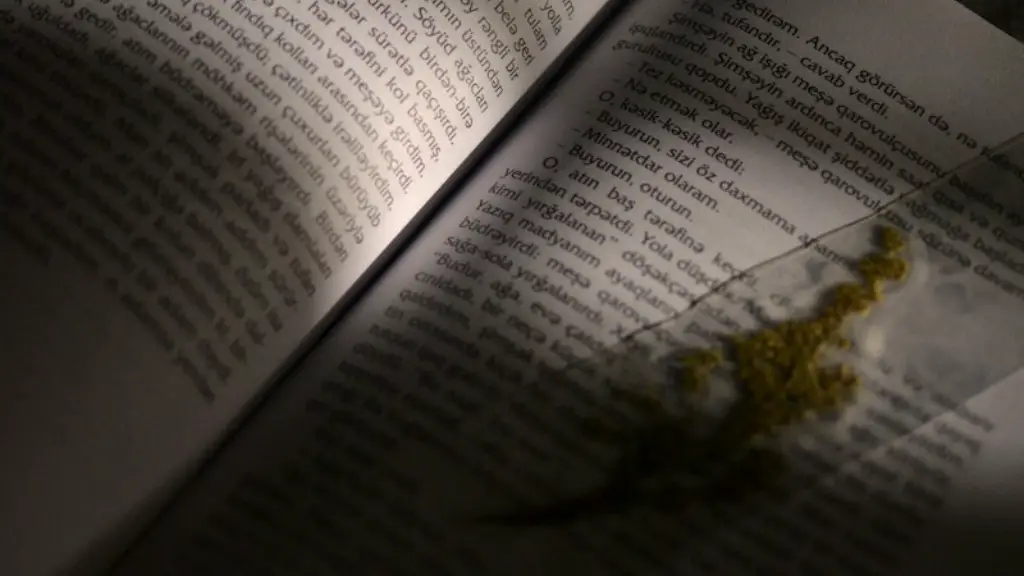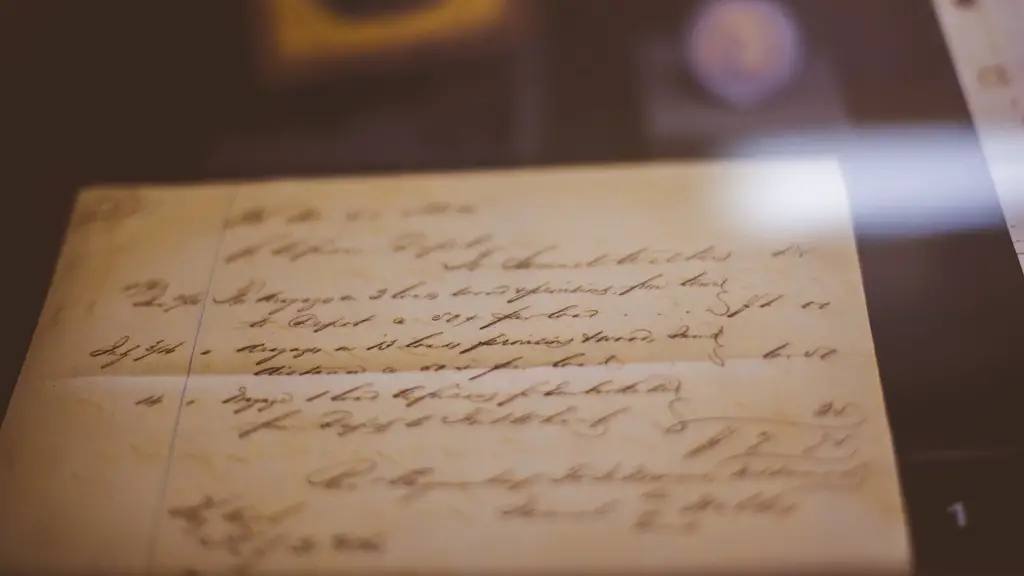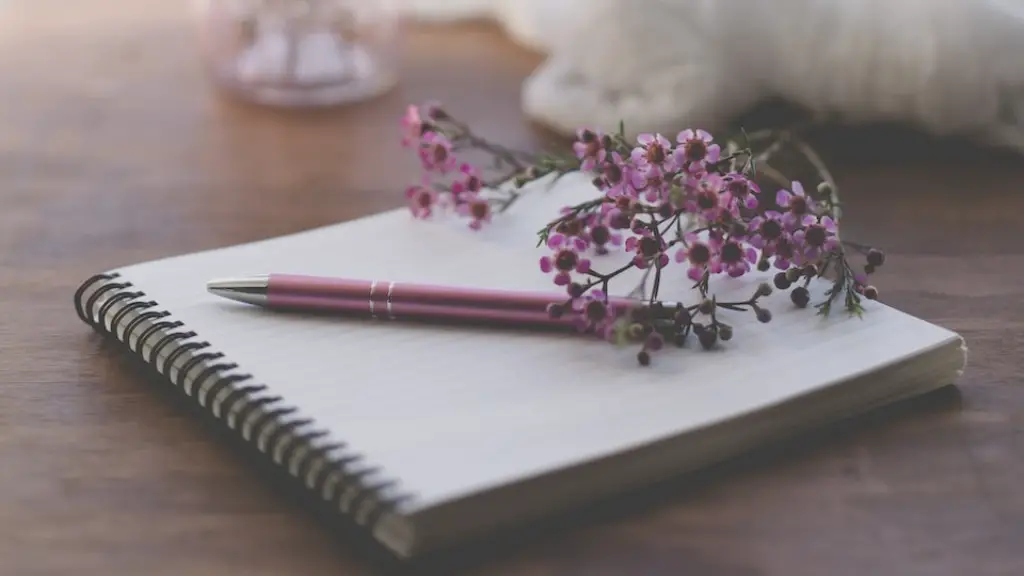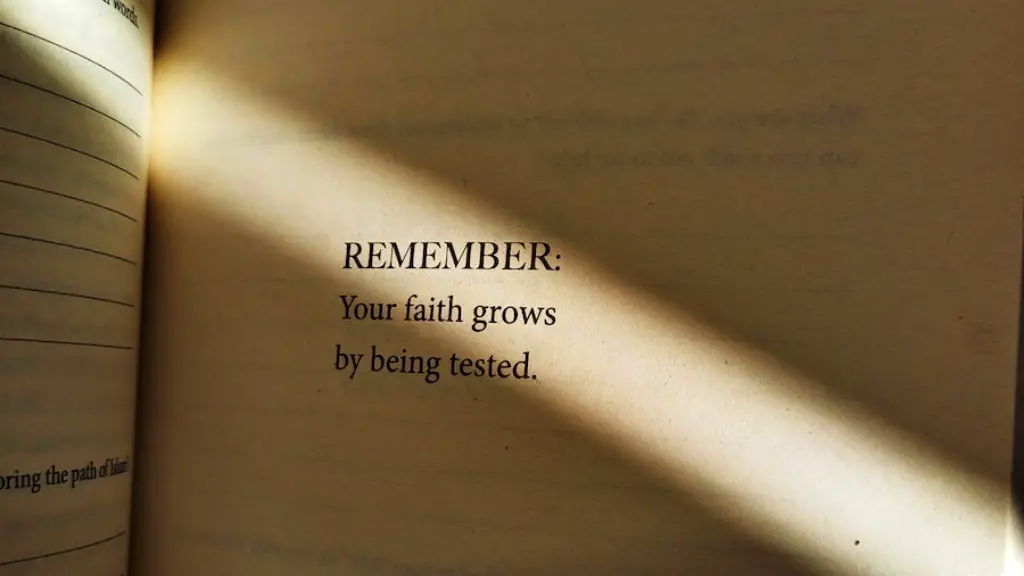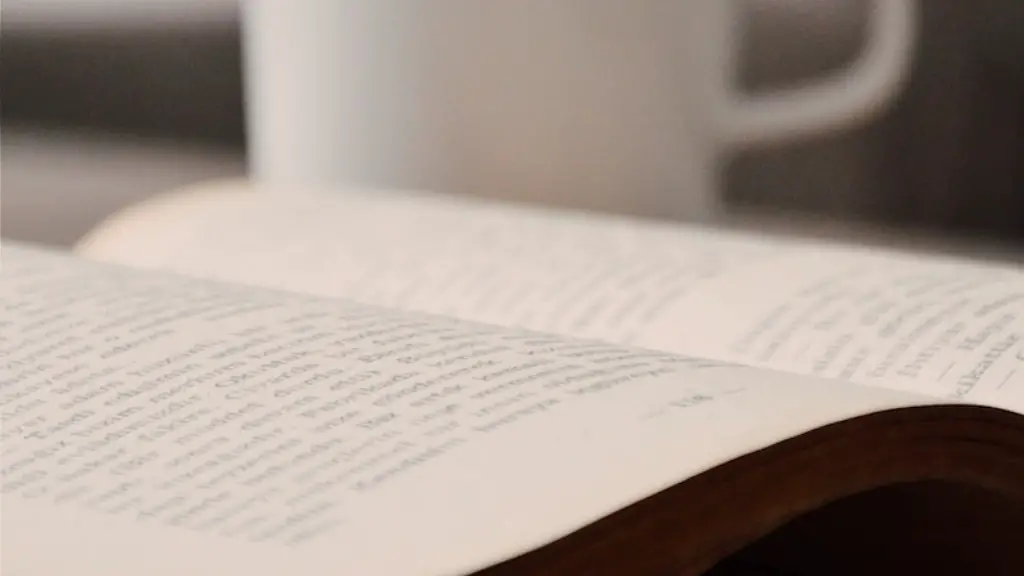Verse in poetry is the basic building block of poetic form. It is the most fundamental part of a poem, where each individual line is part of a larger group. Verse differs from other types of literature because it is written in lines and stanzas, and its structure can be highly metrical or it can include different variations of meter. Verse is not only written in lines, but it is also specifically structured with rhyme, metre, and rhythm. All these characteristics help to make up the sound and imagery of the poem.
Verse can help tell a story or convey an emotion, and poets use various forms of verse to help bring these things to life. There are various ways in which poets can structure their verse; they can use rhyming couplets or quatrains, where two or four lines are put together in a specific pattern. They can also use unrhymed sequences of lines featuring a particular metre such as iambic pentameter. Other forms of structure include free verse, a form of writing where the poet has more freedom with the structure of each line and the overall form of the poem.
Using verses is an important skill for a poet to have. It takes a great deal of practice for the poet to refine their use of rhyme, metre, and rhythm. Poets also need to have a sharp understanding of the English language and use words that create powerful imagery and convey emotion. By understanding and using these techniques, a poet can create beautiful and powerful pieces of work.
Experts agree that verse in poetry is an essential element of the art form, and without it, poems would not be complete. For example, Mark Strand, an American poet and essayist and a former United States Poet Laureate, said, “Although it has probably been around since ancient times, poetry as an art form still thrives on the element of surprise. The way a poet uses verse can bring unexpected beauty and insight to a subject and fill it with new life”.
Verse can also be used to illustrate different points of view. Poets challenge the traditional idea of writing verse and incorporate various forms of expression to better convey the meaning of their poems. As poet and novelist May Sarton wrote, “The whole purpose of writing and of poetry is, as it always has been, to release, to give voice to all that might remain unspoken”.
When reading a poem, it is important to understand the meaning behind the words and the structure of the poem. The structure of a poem is one of the primary ways to interpret its message. For example, if a poem is written in a sonnet structure, it is likely that it is about unrequited love, as the sonnet is often used as a way to talk about such themes. By understanding the structure of the poem, readers can better interpret the message that the poet is conveying.
To sum up, verse in poetry is the key element of the art form. It helps to give poems structure and make them come alive. By understanding how to use rhyme, metre, and rhythm, poets can create powerful pieces of work. As poet, essayist, and teacher William Carlos Williams said, “A poem need not be written in lines, or in any particular measure. A poem needs to start somewhere, and once it starts, then a poet can create a work that has meaning and beauty.
Verse as Symbolism
Verse can be used as a tool for symbolism in poetry. Poets can use it to illustrate abstract ideas and create powerful visual images. For example, in the poem “Ozymandias” by Percy Bysshe Shelley, the poet uses the structure of a sonnet to talk about the power of time and the transience of power. By using the sonnet structure, Shelley is able to convey the message more effectively and create vivid imagery in the reader’s mind.
Verse can also be used to illustrate metaphors. Poets can use the structure of lines to represent relationships or emotions. For example, in her poem “Dreams”, Pulitzer Prize-winning poet and American novelist Louise Glück uses the structure of a sestina to illustrate the idea of hope and perseverance in the face of adversity. The imagery of the poem’s structure helps to create a vivid picture in the reader’s mind and to better understand the poet’s message.
By understanding how to use symbolism and metaphors, poets can create strong verses that will better convey the overall message of their poem. As American poet and playwright Amiri Baraka once said, “Poetry is the way we help give name to the nameless so it can be thought.”
Verse is an important tool for poets who want to create powerful visual images and convey their message in a more effective way.
Verse in Performance Poetry
Verse is also a key element of performance poetry. Performance poetry is a form of literature that is presented through spoken word, often performed in front of an audience. Performance poets use the structure of their verse to emphasize particular words, lines, and themes, making the performance more powerful and impactful.
For example, performance poet and political advocate Saul Williams uses the structure and cadence of his verse to emphasize the power of his words. By using a powerful rhyme and metre, Williams is able to draw listeners in and keep them engaged throughout his performances. Other performance poets such as Suheir Hammad, Patricia Smith, and Jiva use their verse to emphasize powerful messages and bring attention to social issues.
By understanding the structure of their verse and how to use rhythm, rhyme, and metre, performance poets are able to create powerful pieces of work that engage listeners. As poet and professor Laura Gilpin said, “Performance poetry is a powerful form of expression, and verse can help poets to better communicate and convey their message.”
Verse as a Tool for Healing
Verse in poetry can also be used as a tool for healing. Writing or reading poetry can be a powerful way to process difficult emotions. It gives people the space to release pain and suffering, and can help to provide relief. For example, studies have found that writing poetry can help to reduce stress, improve mood, and provide a sense of comfort. In addition, poetry can also help people to connect with their feelings in a safe and creative way.
Verse can be particularly powerful for those suffering from trauma or mental health conditions, as it provides the opportunity to express difficult emotions in a safe and creative way. As Daniel J Levitin, Dean of Social Sciences at McGill University, said, “Writing poetry helps to knit together the physiology, emotions, and rational aspects of the self and is an effective means of finding inner cohesion and healing.”
By understanding the power of verse and its role in poetry, people can use it to heal and find inner peace. Reading and writing poetry can be a powerful tool to help people make sense of difficult emotions and to find solace in times of distress.
Verse as a Tool for Connection
Verse can also be used as a tool for connection and understanding. By understanding the structure of a poem, readers can better comprehend the message that the poet is conveying. Poets use various techniques such as alliteration, assonance, and rhyme to ensure that their message is clear and understood. Furthermore, Verse can also be used to create a connection between readers and help them to relate to and empathise with the poet’s experiences.
For example, American poet and essayist Adrienne Rich used the structure of her verses to convey powerful messages about gender issues, focusing on topics such as women’s rights and feminist ideology. By using her verses to create a sense of connection, Rich was able to engage readers and help them to understand her message.
In conclusion, verse in poetry is an essential tool for poets and readers alike. It can be used to create powerful visual images, a connection between people, and as a way to process difficult emotions. By understanding how to use rhyme, metre, and rhythm, poets can create beautiful and powerful pieces of work.
